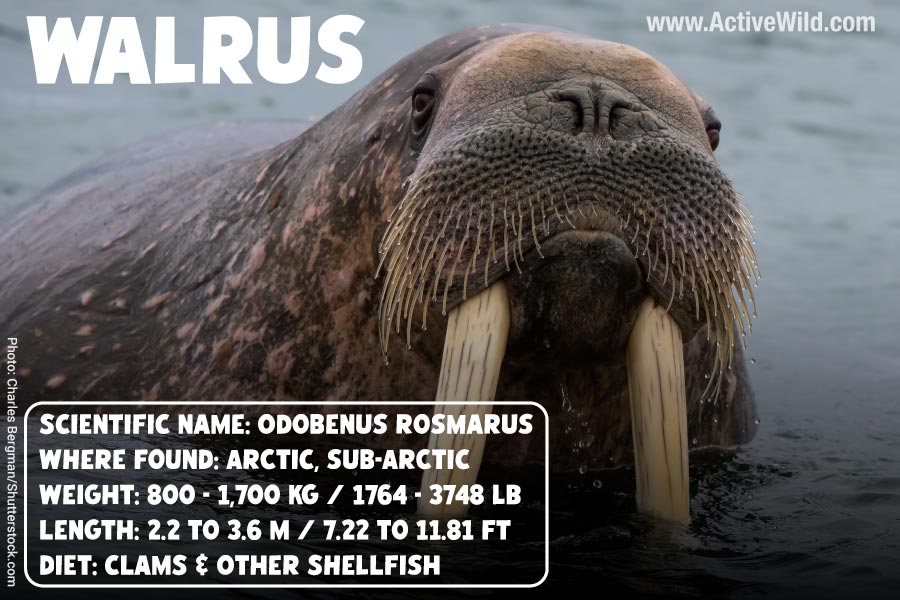The walrus is a semiaquatic marine mammal characterized by its large size, long tusks and moustache-like whiskers. The walrus belongs to the group Pinnipedia, which is also home to the walrus’s closest relatives: the seals and sea lions. The walrus is the only living member of the family Odobenidae. It is found in shallow Arctic and sub-Arctic waters, where it forages for mollusks and other marine animals.
Read on to discover more about this distinctive Arctic animal…
Page Index
- Walrus Facts
- What Type Of Animal Is A Walrus?
- Walrus Subspecies
- Physical Description
- Walrus Tusks
- Where Does The Walrus Live?
- Feeding And Diet: What Does A Walrus Eat?
- Walrus Lifestyle
- Threats to The Walrus
- Walrus Predators
Walrus Facts
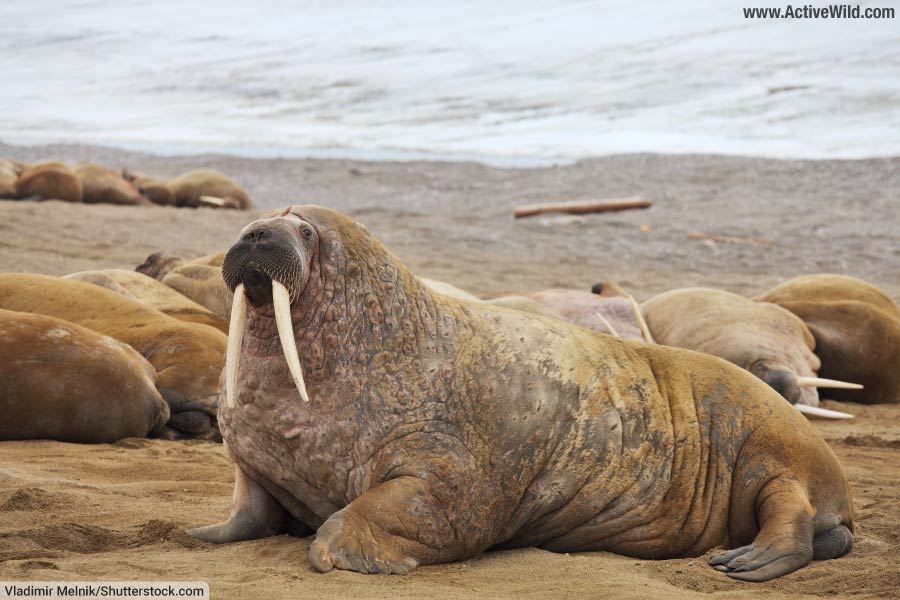
- Scientific name: Odobenus rosmarus
- Family: Odobenidae
- Order: Carnivora
- Class: Mammalia
- Length: 2.2 to 3.6 m / 7.22 to 11.81 ft.
- Weight: (typical) 800 - 1,700 kg / 1764 - 3748 lb.; (maximum) 2,000 kg / 4409 lb.
- Conservation status: Vulnerable
What Type Of Animal Is A Walrus?
A walrus is a pinniped. Pinnipeds are semiaquatic marine* mammals of the clade Pinnipedia.
* Only one pinniped, the Baikal seal, is found exclusively in freshwater habitats.
The other pinnipeds are the seals and sea lions, which are the walrus’s closest relatives.
Pinnipeds have numerous adaptations for a semiaquatic lifestyle, including streamlined bodies, flippers for limbs, and a layer of blubber that provides insulation in cold water.
The walrus is the only living member of the family Odobenidae, although several extinct members of this family have been discovered.
Odobenidae is one of three pinniped families:
Pinniped Families
- Odobenidae (the walrus)
- Otariidae (“eared seals”) (sea lions and fur seals)
- Phocidae (“earless seals”) (true seals)
Genetic evidence suggests that walruses split from the eared seals after the eared seals had split from the earless seals. Therefore, the walrus is more closely-related to eared seals than it is to earless seals.
The Walrus Is A Carnivoran
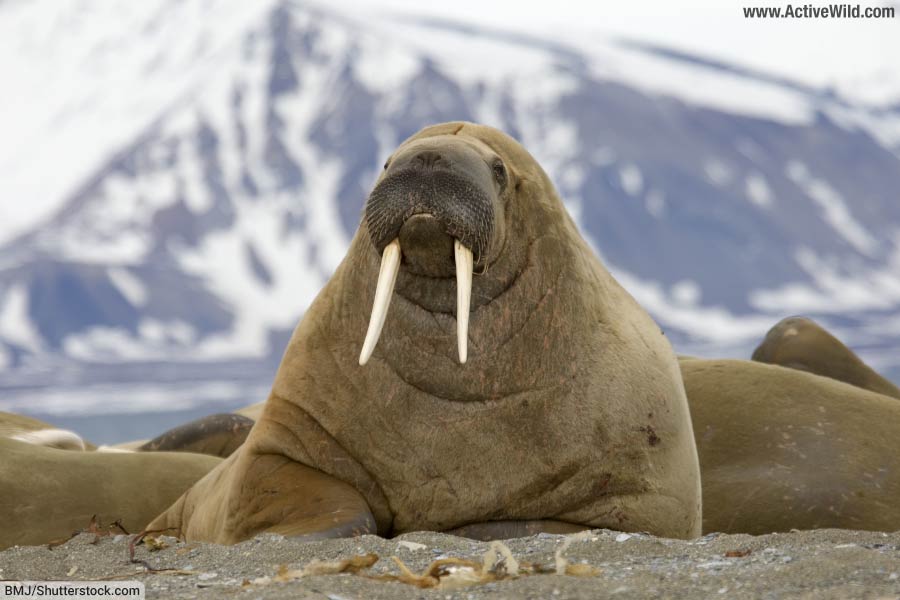
The walrus – like all pinnipeds – belongs to the mammalian order Carnivora, which also contains families such as the dog family Canidae, the cat family Felidae, and the bear family Ursidae.
Carnivorans (members of Carnivora) are more closely-related to one another than they are to mammals in other orders. Therefore, a walrus is more closely-related to a dog than it is to (for example) a mouse, monkey, dolphin or hippo.
Confused about terms such as "class", "order" and "family"? Check out this page: Animal Classification
The ancestor of all living pinnipeds was a land-living carnivoran that resembled an otter. Over millions of years the pinnipeds became ever-more adapted for life in the sea.
Pinnipeds are not related to whales and dolphins, which evolved from a different group of land mammals.
You can find out more about the different types of mammals on this page: Types of Mammals
Walrus Subspecies
The walrus has two subspecies: the Atlantic walrus (Odobenus rosmarus rosmarus), and the Pacific walrus (Odobenus rosmarus divergens).
The Pacific walrus’s population, which numbers around 200,000 individuals, is considerably larger than that of the Atlantic walrus, which consists of only around 25,000 individuals. Physically, the Pacific walrus tends to be slightly larger than its Atlantic cousin.
Physical Description
Like other pinnipeds, the walrus has a streamlined, torpedo-shaped body for efficient swimming, and a think, insulating layer of blubber.
Unlike other pinnipeds, the walrus has tusks and nearly hairless skin.
The walrus has characteristics common to both eared and earless seals. Like the eared seals, the walrus can turn its hind flippers forwards in order to walk on land, although due to its bulk it will also shuffle and even roll to move around.
(When on land, earless seals move by shuffling forwards on their stomachs, pulling themselves along with their front flippers.)
Like the earless seals (and unlike the eared seals), the walrus is reliant mainly on its hind flippers when swimming. Also like the earless seals, the walrus lacks external ears.
Walrus Tusks
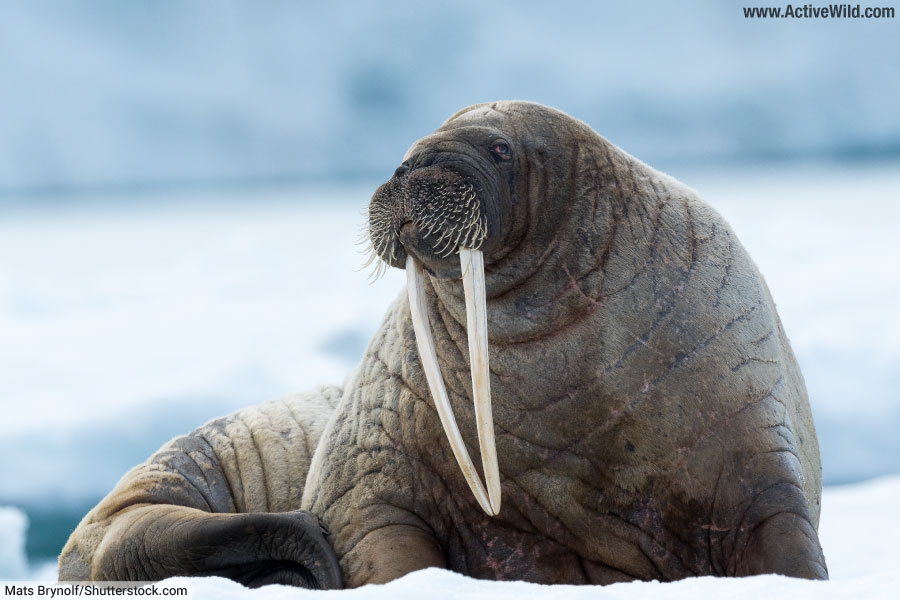
Both male and female walruses have tusks, those of the male being longer and sturdier than those of the female. A walrus’s tusks are elongated upper canine teeth.
The tusks of a large male walrus can reach lengths of up to 1 m / 3.28 ft.
A walrus uses its tusks to make and maintain breathing holes in the ice, and also when hauling its huge body out of the water and onto the ice. A walrus does not use its tusks for digging up prey from the seabed.
During the breeding season, male walruses use their tusks to intimidate and fight other males. The male walrus with the longest tusks is often the dominant male on the beach.
Where Does The Walrus Live?
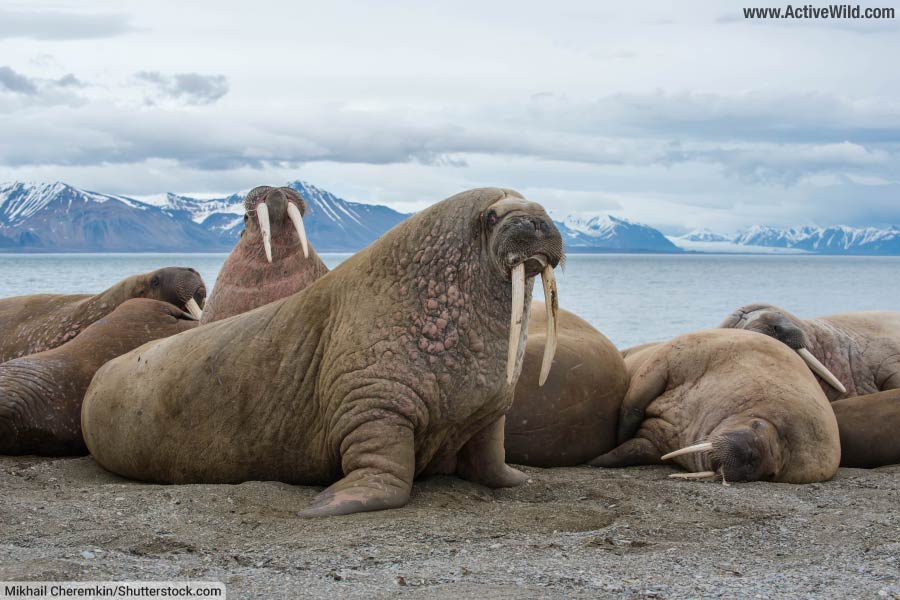
The walrus is found in shallow coastal waters in Arctic and sub-Arctic regions. The Atlantic walrus subspecies is found from northeast Canada to western Russia. The Pacific walrus is found from eastern Russia and Alaska. Pacific walruses are migratory, inhabiting the Bering Sea in winter, and migrating to the Chukchi Sea to summer.
You can find out more about the Arctic on this page: Arctic Facts
Feeding And Diet: What Does A Walrus Eat?
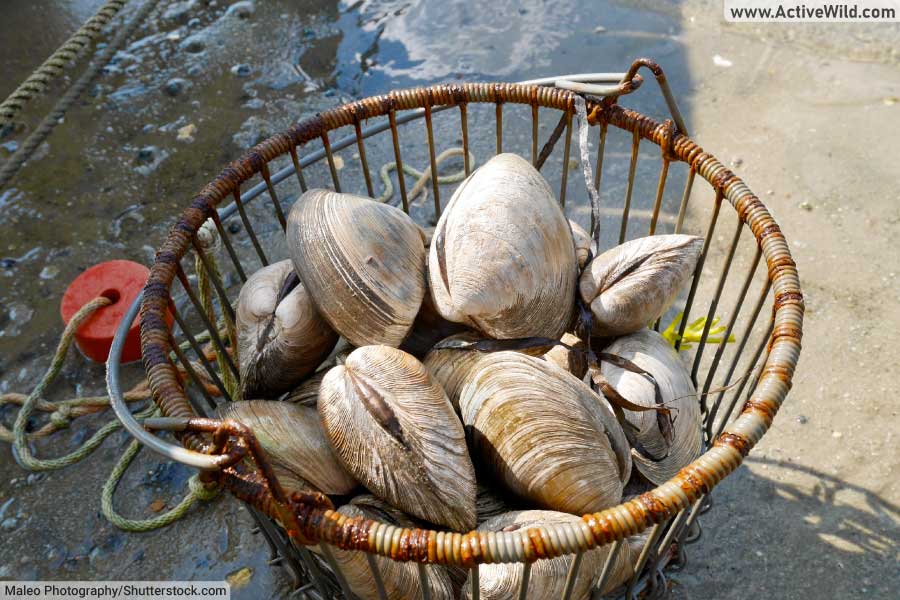
The walrus, like all pinnipeds, is a carnivore, and more specifically, a molluscivore (a carnivore that primarily feeds on mollusks).
You can find out more about this and other animal diets on this page: What Do Animals Eat?
The walrus is typically a forager rather than an active hunter, its diet consisting mainly of clams, mussels, and other bivalve mollusks, which it locates on the sea bed using its sensitive mystacial vibrissae (whiskers). A walrus can eat up to 6,000 clams in one session.
You can find out more about bivalves and other types of mollusks on this page: Types of Mollusks
Suction Feeder
The walrus is a suction feeder. It sucks shellfish out of their shells by creating a seal with its lips and forming a vacuum with its powerful tongue. The soft body parts of the shellfish are then swallowed without being chewed.
As well as bivalve mollusks, the walrus will also eat a wide range of other marine animals, including snails, worms, crabs, shrimp and sea cucumbers. Slow-moving fish may also be caught.
When its usual food is scarce, a walrus may eat carrion, particularly seal carcasses. There are also instances of individual walruses developing a taste for seal flesh and actively hunting bearded and ringed seals.
Although capable of diving to depths of around 500 m / 1,640 ft, the walrus typically forages in waters of depths of between 20 and 30 m / 66 and 98 ft.
Walrus Lifestyle
You can see walruses in their natural environment in the video below.
The walrus is a highly social species, usually found in large groups known as herds. A walrus herd can consist of hundreds of individuals.
For most of the year, males (bulls) and females (cows) form separate herds. Larger, mixed herds form during the mating season, which lasts from January to March.
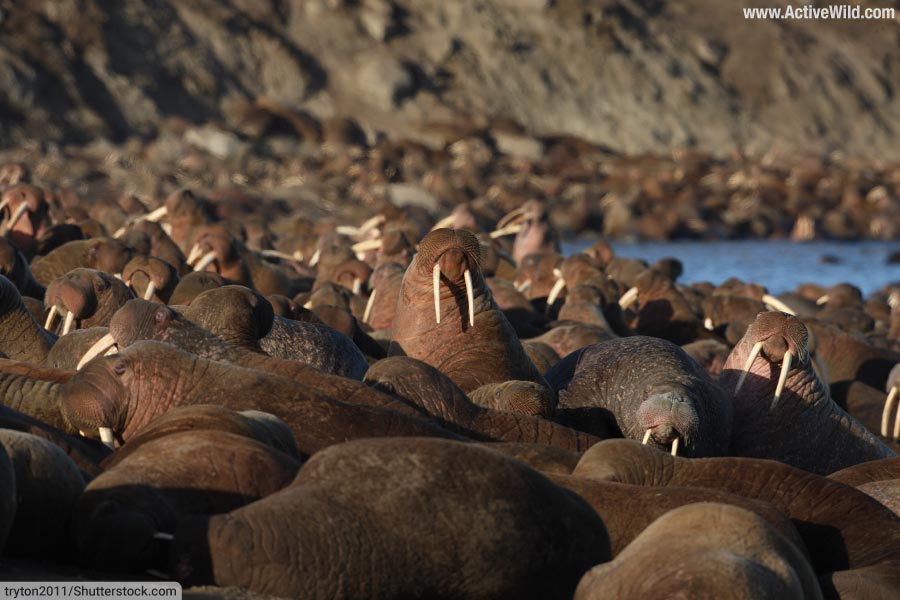
During the mating season, males become highly aggressive, and will compete over the ownership of groups of females. Mating takes place in the water.
Gestation lasts for 15 to 16 months, with females giving birth to a single calf (or, very occasionally, twins) in the spring.
A walrus calf is able to swim as soon as it is born, and will live with its mother until three years of age. At this time, young males leave the female herd to live with a male herd.
Threats to The Walrus
The walrus has the IUCN Red List conservation status of “Vulnerable”. Throughout the 18th and 19th centuries, walruses were hunted in large numbers, pushing the Atlantic subspecies close to extinction.
Today, only indigenous peoples are allowed to hunt the walrus.
Walrus Predators
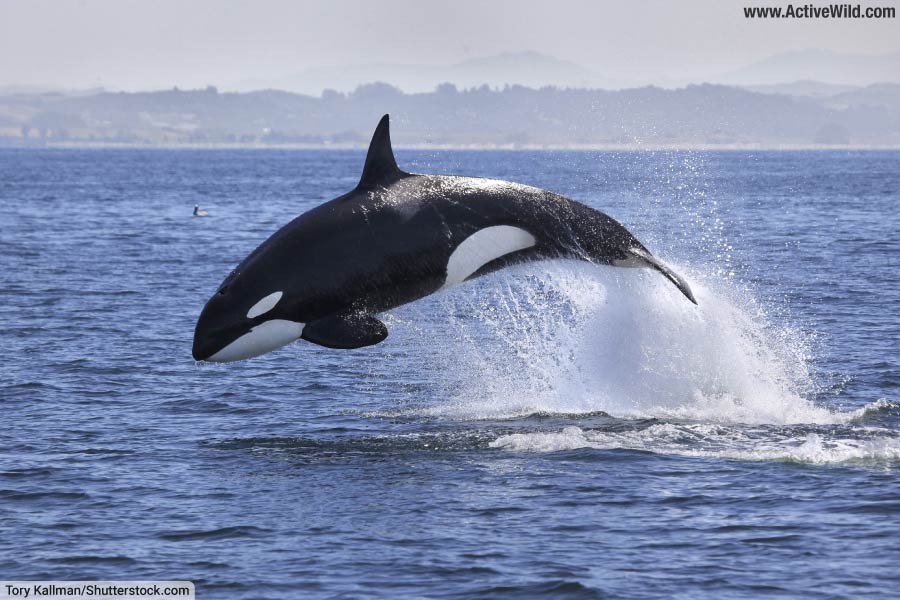
The walrus is an extremely large and well-defended animal. Only two animals will take on a full-grown walrus: the polar bear and the killer whale / orca.
A polar bear is in danger of losing a fight against a walrus, and will therefore only usually attempt an attack if desperate.
Discover More With Active Wild
- Discover more Arctic animals on this page: Arctic Animals
- See more amazing ocean animals on this page: Ocean Animals
- Discover animals from all around the world on this page: A to Z Animals
- Find out more about the animal kingdom and become an animal expert: Animals - The Ultimate Guide

